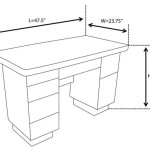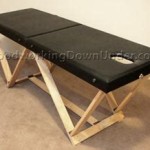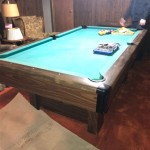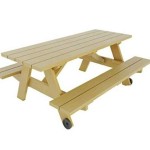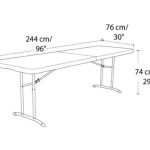How To Redo a Kitchen Table With Chalk Paint
Redoing a kitchen table with chalk paint is a cost-effective and relatively simple way to breathe new life into a tired piece of furniture. Chalk paint's popularity stems from its ease of application, minimal surface preparation requirements, and the unique matte finish it provides. This article outlines a detailed process for successfully transforming a kitchen table using chalk paint, covering everything from material selection to sealing the finished surface.
Key Point 1: Preparation and Material Selection
The success of any chalk paint project hinges on proper preparation. This stage involves gathering the necessary materials and preparing the table surface for optimal paint adhesion. Ignoring this step can lead to a less-than-desirable final result, including peeling, chipping, or uneven coverage.
Essential Materials:
- Chalk Paint: Select a chalk paint in your desired color. Numerous brands offer a wide range of colors and finishes designed specifically for furniture. Consider the overall aesthetic you're aiming for when making your selection. One quart of paint typically covers a standard-sized kitchen table.
- Paintbrushes: A high-quality paintbrush is crucial for achieving a smooth and even finish. Opt for a brush specifically designed for chalk paint or a good-quality synthetic brush. A smaller brush may be helpful for detailed areas.
- Sandpaper: While chalk paint claims to require minimal sanding, a light sanding is still recommended for optimal adhesion, especially on glossy surfaces. Use a fine-grit sandpaper (220 grit or higher) for this purpose. For tables with heavily varnished or damaged surfaces, a coarser grit sandpaper (120-180 grit) may be necessary initially.
- Cleaning Supplies: A clean surface is essential for paint adhesion. Gather a mild detergent, warm water, and clean cloths or sponges.
- Painter's Tape (Optional): If your table has elements you don't want to paint, such as metal legs or a contrasting wood trim, painter's tape will provide a clean, crisp line.
- Drop Cloth or Protective Covering: Protect your work area from paint splatters and spills by laying down a drop cloth or other protective covering.
- Chalk Paint Sealer (Wax or Polyurethane): Chalk paint is porous and requires a sealer to protect it from moisture and everyday wear and tear. Chalk wax is a traditional option, offering a soft, matte finish. Polyurethane provides a more durable, water-resistant finish. The choice depends on the table's intended use and the desired aesthetic.
- Wax Brush or Foam Applicator (If using Wax): A wax brush or foam applicator is designed to evenly distribute and buff the wax sealer.
- Lint-Free Cloths: These are essential for wiping away excess wax and buffing the surface to a smooth finish.
- Polyurethane Application Supplies (If using Polyurethane): Depending on the type of polyurethane (water-based or oil-based), you may need a specific type of brush or foam applicator. Follow the manufacturer's instructions carefully.
Surface Preparation:
1. Cleaning: Thoroughly clean the table surface with a mild detergent and warm water. Remove any grease, dirt, or debris. Rinse well and allow the surface to dry completely.
2. Sanding: Lightly sand the table surface with fine-grit sandpaper. Focus on areas with a glossy finish or any imperfections. This will create a slightly roughened surface that will improve paint adhesion. Wipe away sanding dust with a clean, damp cloth.
3. Taping (Optional): Apply painter's tape to any areas you want to protect from the paint.
Key Point 2: Applying the Chalk Paint
The application of chalk paint is a straightforward process, but attention to detail is crucial for achieving a professional-looking finish. Applying thin, even coats and allowing sufficient drying time between coats are key to preventing drips, streaks, and uneven coverage.
Painting Technique:
1. First Coat: Dip your brush into the chalk paint, removing any excess by tapping it against the side of the can. Apply the paint to the table surface in long, even strokes, following the grain of the wood when possible. Chalk paint is known for its thick consistency, so avoid applying it too thickly, as this can lead to drips and uneven drying.
2. Drying Time: Allow the first coat to dry completely according to the manufacturer's instructions. This typically takes at least 1-2 hours, but it can vary depending on the humidity and temperature.
3. Second Coat: Apply a second coat of chalk paint using the same technique as the first coat. This coat will provide better coverage and a more uniform color. Again, ensure the paint is applied thinly and evenly.
4. Additional Coats (If Needed): Depending on the original color of the table and the desired opacity, you may need to apply a third coat of chalk paint. Allow sufficient drying time between each coat.
5. Sanding Between Coats (Optional): For an ultra-smooth finish, lightly sand the painted surface with fine-grit sandpaper between coats. This will remove any imperfections and create a smoother surface for the next coat of paint. Remember to wipe away any sanding dust before applying the next coat.
Distressing (Optional):
If you desire a distressed or aged look, this is the stage to achieve it. Using sandpaper, gently rub away paint in areas that would naturally wear over time, such as edges, corners, and around handles. Control the amount of distressing to achieve your desired effect. Less is often more when distressing furniture.
Key Point 3: Sealing and Protecting the Painted Surface
Chalk paint is porous and requires a sealer to protect it from moisture, stains, and everyday wear and tear. Choosing the right sealer and applying it correctly is essential for ensuring the longevity and durability of your refinished kitchen table.
Sealer Options:
- Chalk Wax: Chalk wax provides a soft, matte finish and is a traditional option for sealing chalk paint. It is relatively easy to apply and provides a subtle sheen. However, it requires periodic reapplication to maintain its protective properties.
- Polyurethane: Polyurethane offers a more durable and water-resistant finish than chalk wax. It is available in various sheens, from matte to gloss. Water-based polyurethane is preferred for its low odor and easy cleanup. Oil-based polyurethane provides a more durable finish but has a stronger odor and requires mineral spirits for cleanup.
Applying Chalk Wax:
1. Application: Apply a thin layer of chalk wax to the painted surface using a wax brush or foam applicator. Work in small sections, using a circular motion to ensure even coverage.
2. Wiping Away Excess: After a few minutes, use a lint-free cloth to wipe away any excess wax. This will prevent the wax from becoming sticky or cloudy.
3. Buffing: Once the wax has dried completely (usually after a few hours), buff the surface with a clean, lint-free cloth to achieve a smooth, subtle sheen. The more you buff, the shinier the finish will become. Multiple thin coats of wax, each buffed after drying, will offer better protection than a single thick coat.
Applying Polyurethane:
1. Application: Apply a thin, even coat of polyurethane to the painted surface using a brush or foam applicator that is appropriate for the type of polyurethane you are using. Follow the manufacturer's instructions carefully.
2. Drying Time: Allow the polyurethane to dry completely according to the manufacturer's instructions. This usually takes several hours.
3. Sanding (Optional): Lightly sand the surface with fine-grit sandpaper (400 grit or higher) between coats of polyurethane. This will remove any imperfections and create a smoother surface for the next coat. Wipe away sanding dust with a clean, damp cloth.
4. Second and Third Coats: Apply two or three coats of polyurethane, allowing each coat to dry completely and sanding lightly between coats if desired. Multiple coats will provide better protection and durability.
Curing Time: Regardless of which sealer is chosen, allow the sealed table to cure completely before using it. This typically takes several days, but it can vary depending on the product and environmental conditions. Avoid placing heavy objects on the table during the curing process.
By following these detailed steps for preparation, application, and sealing, a kitchen table can be successfully transformed with chalk paint, resulting in a beautiful and durable piece of furniture that will be enjoyed for years to come. The versatility of chalk paint allows for customization to suit any style, from rustic and distressed to modern and sleek.

How To Update A Table With Chalk Paint I Dig

Kitchen Table Makeover Using Chalk Paint And Wood Stain Love Our Real Life

Antique Dining Table Updated With Chalk Paint Anderson Grant

Gorgeous Chalk Paint Dining Table Makeover Diy Kindly Unspoken

How To Paint A Laminate Kitchen Table Confessions Of Serial Do It Yourselfer

Dining Table Makeover Don T Buy New Furniture Prettydistressed

How To Save Tired Dining Room Chairs With Chalk Paint Right Now

Diy Dining Room Table Makeover Farmhouse Chalk Paint Tutorial

How To Save Tired Dining Room Chairs With Chalk Paint Right Now

A Kitchen Table That Pops Happiness Is Creating


